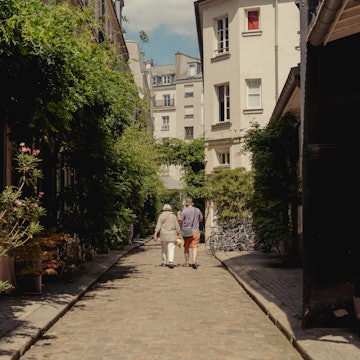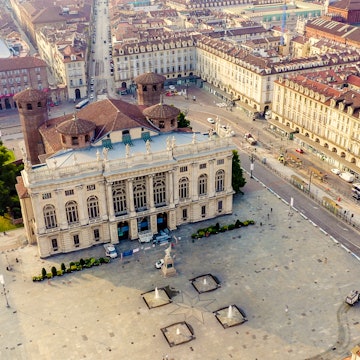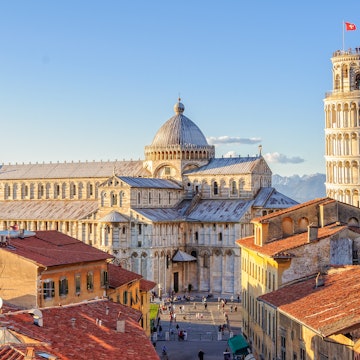
A 9-day itinerary through Southern Italy



Boats cruising off the coast near Naples in Southern Italy. Jayne Lipkovich/Shutterstock
Southern Italy is where you’ll find the nation at its most relaxed and uninhibited. The regions of Campania, Puglia, Basilicata, Calabria and Sicily have been bathed by influences from beyond Italy’s shores for millennia, creating a mood that is unmistakably Mediterranean and subtly different from the north of the country.
Travelers who venture to the south of Italy will find a land of rolling farms and vineyards, towering volcanoes, coastlines that morph from rocky cliffs to beautiful beaches, vibrant cities awash with historical treasures, and markets piled high with the sun-blessed produce the region is famous for.
In places, the south can be rough at the edges – some cities show lingering traces of past government neglect and the long reach of organized crime – but it’s also animated and authentic. Here, the tides of fashion are less important than joining the afternoon promenade known as the passeggiata, and long, languorous lunches that seem to go on for hours.
This 9-day itinerary will give you time to explore some of the highlights of the south, driving or using trains, buses and ferries to daisy chain across the Mezzogiorno (the local name for the south) from Naples to Sicily.
When to arrive
As elsewhere in Italy, the best time to come for warm, sunny weather is from June to August, but the temperatures can creep above 30°C on hot days. This is also the busiest time for tourism, particularly in Naples, along the Amalfi Coast and on holiday islands such as Capri and Sicily, with peak hotel prices and airfares to match.
The best time to beat the crowds is during the shoulder seasons from April to May and September to October. The weather is cooler and there’s more chance of rain, but wildflowers paint the hillsides in spring, fall foliage animates the landscape in fall and visitor numbers fall significantly. Winter tends to be cold and quiet but it’s the ski season in mountain areas.

How to get around
In Campania, particularly close to Naples and around Pompeii and the Amalfi Coast, a car can be a positive hindrance in the summer traffic. Many visitors wisely stick to buses, boats and trains. Elsewhere, having your own vehicle can open up interesting detours and the opportunity to stay in rural agriturismi (farm stays) and masserie (fortified medieval farmsteads).
If you’re flying into Naples, consider visiting the Bay of Naples islands, Pompeii and Herculaneum, and the Amalfi Coast by public transport, and then hiring a car to explore other parts of the Mezzogiorno. Trains and buses are another option, though journeys can involve a few connections. It’s easy to travel from Villa San Giovanni or Reggio di Calabria in Calabria to Messina by car ferry and then continue your journey in Sicily.
What to pack
Pack comfortable shoes for walking, a sun hat and beach gear for warmer weather, plus a smart outfit or two for upmarket dinners, particularly around glam holiday spots such as Capri. Outside of summer, bring warmer clothing, particularly for the evenings, and be ready for rain and even winter snow at higher elevations.

Days 1–2: Feast on experiences in Naples
Go to Naples: The capital of Campania, Naples is Italy’s third-largest city – a mighty metropolis lorded over by a celebrity volcano. Planes buzz here from across Europe and the world, along with trains on Italy’s high-speed network.
How to spend the days: Many people feel they know exactly what to expect from Naples, only to be caught off guard – pleasantly – by its unique character. The story of Naples begins with the Greek colony of Neapolis, founded in 474 BCE, but later Roman, Norman, Spanish and Bourbon rulers made the city fabulously wealthy, leaving behind architectural magnificence and a vibrant foodie culture that has endured even the baleful influence of the Camorra (the Naples Mafia).
Some parts of the city are visibly frayed, but that’s just part of Naples’ character. As you walk the streets, every few paces will reveal another eye-popping monument or a bustling market square. Use your time here to soak in some Neapolitan history and culture before hitting the ancient sites nearby. Get around on foot or on the modern-art-filled metro.
Start investigating Naples’ unique vibe at the Duomo di Napoli, founded in 1272, where ampules of the blood of San Gennaro are seen to miraculously liquefy during religious ceremonies in May, September and December. Examine the Gothic interiors, the Cappella di San Gennaro and the adjacent Museo del Tesoro di San Gennaro with its jewel-encrusted heirlooms.
Graze the food markets, pause for Neapolitan coffee – Caffè Ciorfito and Cuccuma Caffè are classic old-school espresso stops – and feast on Neapolitan pizza (many say it’s the best in the country). Begin the pizza journey at local favorite L’Antica Pizza Da Michele in the Centro Storico, or head to Lombardi 1892, which has been dishing out pizzas for over a century.
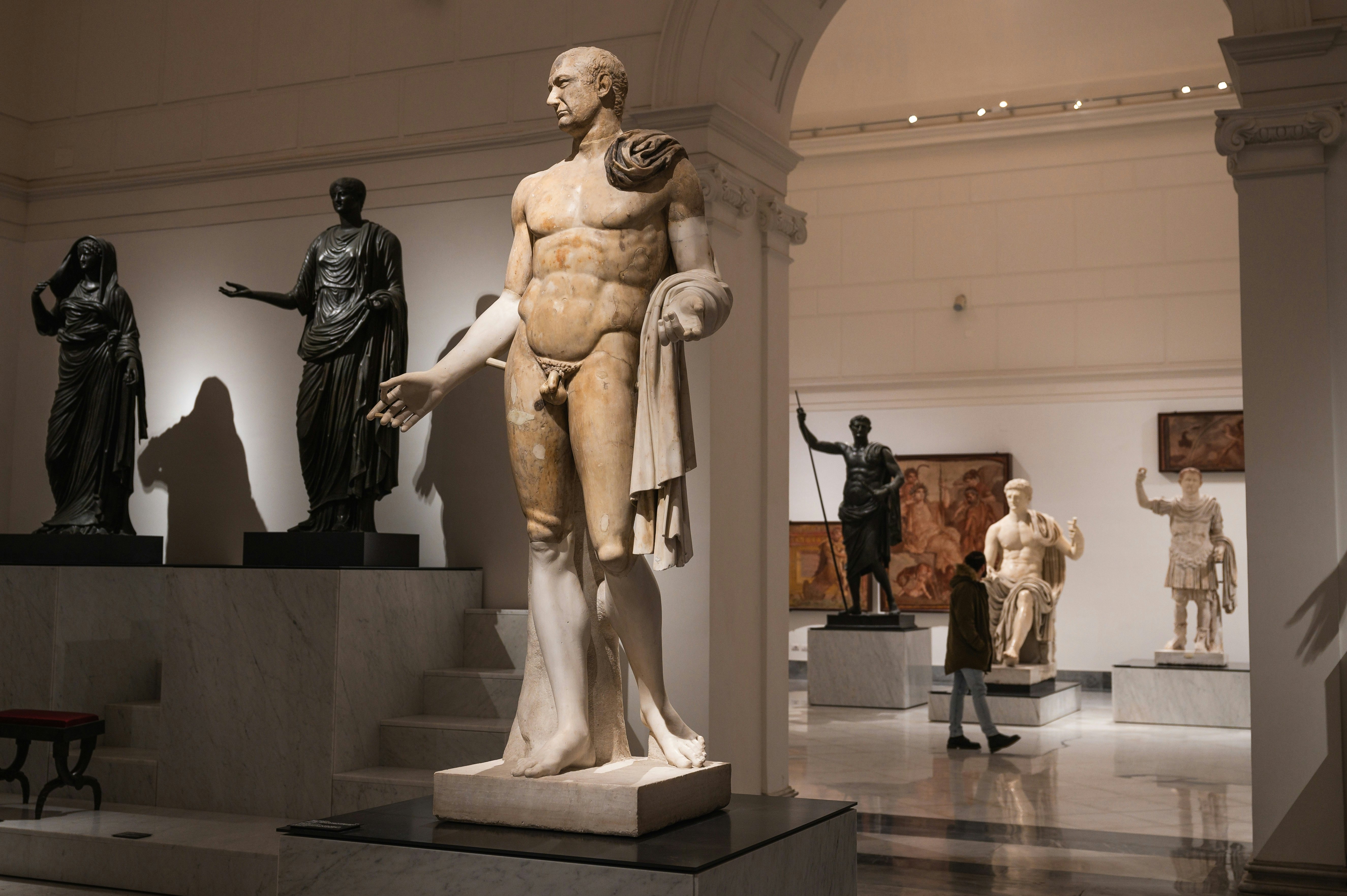
Stop by the Museo Archeologico Nazionale di Naples (MANN) for a crash course in Southern Italian history. It’s stuffed with Greek and Roman antiquities, mosaics recovered from the ruins of Herculaneum and Pompeii and a vast collection of Egyptian artifacts. Art aficionados will enjoy the forest-set Museo di Capodimonte, with its treasure trove of artworks.
Use a few hours to wander the historic center from Piazza del Gesù to Piazza Bellini, taking in baroque churches such as Chiesa del Gesù Nuovo and spooky Santa Maria delle Anime, devoted to the city’s unidentified dead.
Other Naples treats include the eerie Catacombe di San Gennaro, a rock-cut necropolis hollowed out from the 2nd century CE, and the ride on the Funicolare di Montesanto, which will whisk you to the epic viewpoint by the star-shaped Castel Sant’Elmo (look out for Mt Vesuvius).
Evening: Use your evenings to eat well (in Naples, it’s hard not to). With a Michelin-star budget, book ahead for Aria, where Neapolitan food is elevated to high gastronomy, or go cozy and old-school at La Campagnola off Piazzetta Nilo. At Januarius, classic Neapolitan food is served beneath frescoed ceilings.
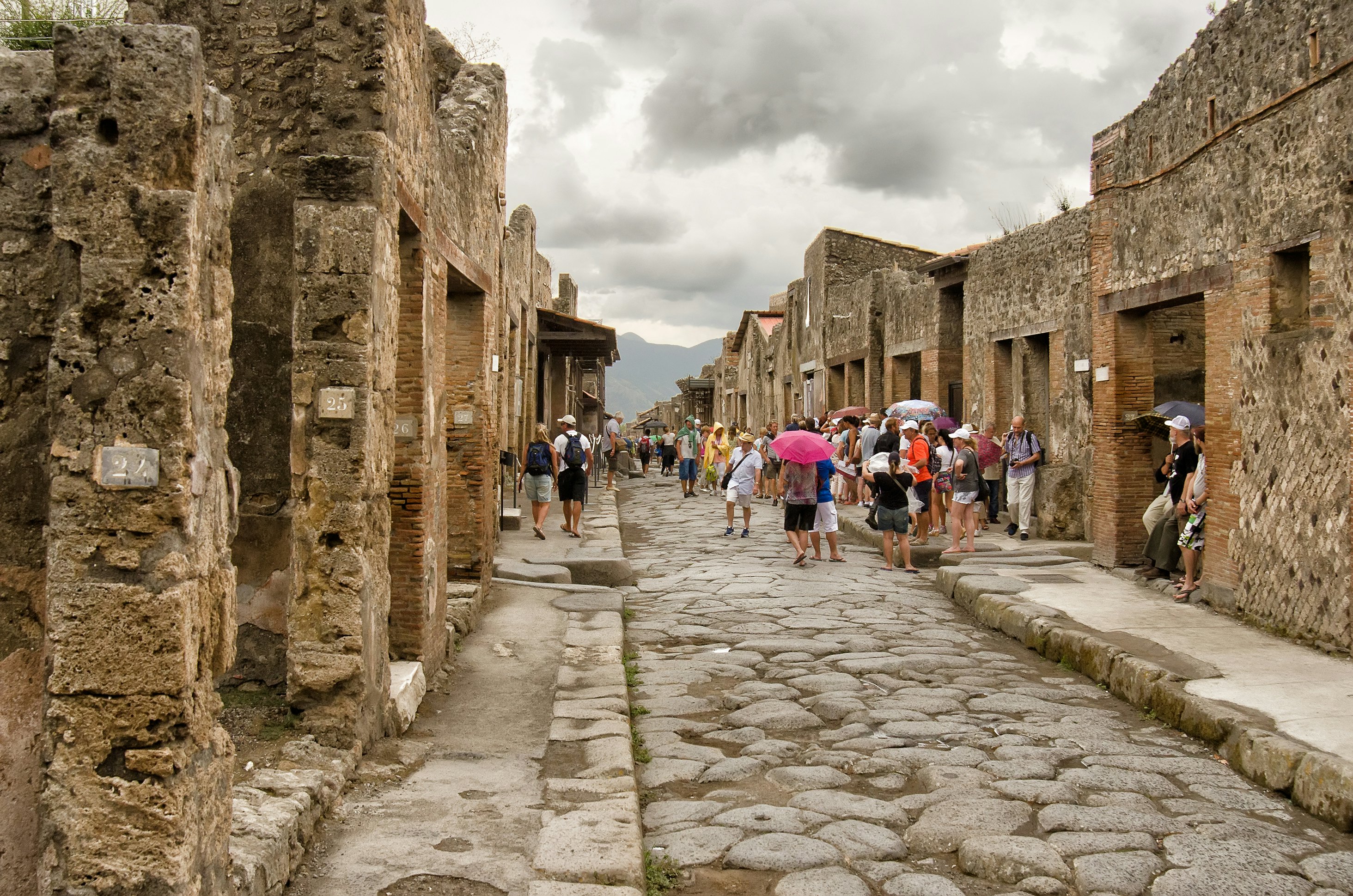
Days 3–4: Circle the Bay of Naples
Explore around the Bay of Naples: Reach Pompeii and Herculaneum on the Circumvesuviana train, which links Naples and Sorrento. Beat the traffic congestion along the Amalfi Coast on the SITA bus. Ferries buzz out from Naples and Sorrento to Capri and Ischia.
How to spend the days: Over 2 days, you can dive into the fascinating and tragic ancient tragedy of Pompeii, admire Amalfi Coast towns and buzz over to the glam islands of the Gulf of Naples.
Begin by riding the train from Naples to the remarkable ruins of Pompeii – a once-thriving Roman city buried under tons of lapilli (burning fragments of pumice stone) from nearby Mt Vesuvius in 79 CE. As well as entombing citizens in ash, this shroud of volcanic material preserved whole Roman streets and 2-millennia-old houses, temples, cafes, shops and amphitheaters.
A short hop along the coast is Herculaneum, another unfortunate Roman township devastated by the 79 CE eruption. Here, deadly mud flows choked whole villas, leaving them perfectly preserved. Admire the interior decor at the Casa dei Cervi, with its classical statues, and the mass grave inside the warehouses of L’Antica Spiaggia, where hundreds sought refuge.
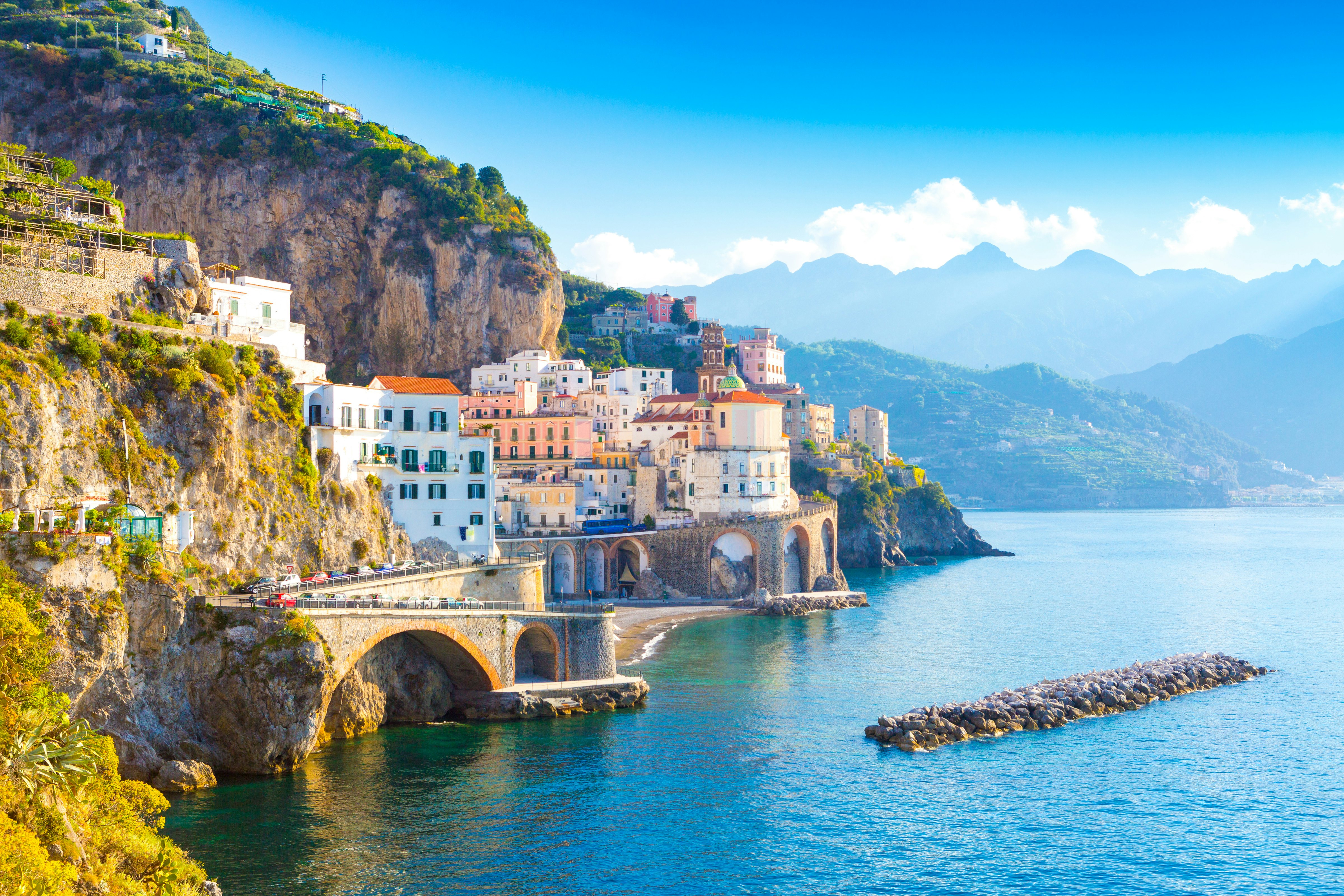
Now it’s time to take on the Amalfi Coast – beautiful, undeniably glamorous, but mobbed by visitors from June to September. Take your pick from foodie, super-chef-stalked Vico Equense, the beautiful gardens in Ravello, cathedral-crowned Amalfi or absurdly pretty Positano.
If time allows, hike a section of the Sentiero degli Dei (Path of the Gods) – it serves up better views than the traffic-crammed SS163 Hwy. Wrap up a circuit of the peninsula in Sorrento – a lemon-scented stunner that was an essential stop on the 18th-century Grand Tour.
From Sorrento, return to Naples via the chic islands in the Gulf of Naples, starting with geothermally active Ischia. Drop into Bar Calise for an island-style cornetto (croissant), then try out one of the island’s thermal spas, such as Forio’s beachside Giardini Poseidon.
On to glamorous Capri, a favorite retreat of Roman emperor Tiberius and a string of modern-day stars and celebs. Hit up Capri Town’s chic boutiques and uber-glam cafes, walk through idyllic woodland to ancient Roman villas, and roam the coast, visiting pebble beaches and the brilliant-blue Grotta Azzurra (Blue Grotto). Then it’s back to Naples to continue your journey around the south.
Evening: On the Amalfi leg, make for Vico Equense and dine with double Michelin stars and a view at Torre del Saracino. If Positano is your stop, hit food-as-theater restaurant Casa Mele; if it’s Sorrento, try O'Puledrone for harbor-side seafood. In Capri, go to town at Michelin-starred seafood house Gennaro Amitrano, then sip lemon-flavored cocktails in a lemon grove at Giardino Mediterraneo.

Day 5: Cross the south to Bari
Go to Bari: The best way to hop across from Naples to Bari is by train, with a change in Caserta – a trip of under 5 hours, with lots of scenery to distract you on the journey. Direct FlixBus coaches are slightly quicker.
How to spend the day: With a long journey to get here, be selective about what you do in Bari. Start by exploring the historic district of Bari Vecchia (Old Bari), a former haunt of the Capriati and Strisciuglio crime families. Today, it’s best known for its atmospheric stone alleys and the so-called “pasta grannies” who make colorful orecchiette (“little ears” pasta) by the medieval Arco Basso.
Step into history at the 12th-century Castello Svevo, then visit the Cattedrale di San Sabino, a classic example of Puglia’s distinctive Romanesque architecture. Here, the Museo del Succorpo della Cattedrale shows off subterranean Byzantine and Roman ruins below the cathedral. If time allows, end the day with a wander along the Lungomare – Europe’s longest seafront promenade.
Evening: Take time to sample the city’s most famous food – focaccia barese, a flat Puglian bread topped with cherry tomatoes, black or green olives, fresh oregano and lashings of olive oil. It’s served all over Bari – sample it at Panificio Santa Rita or Panificio Fiore, open since 1508.
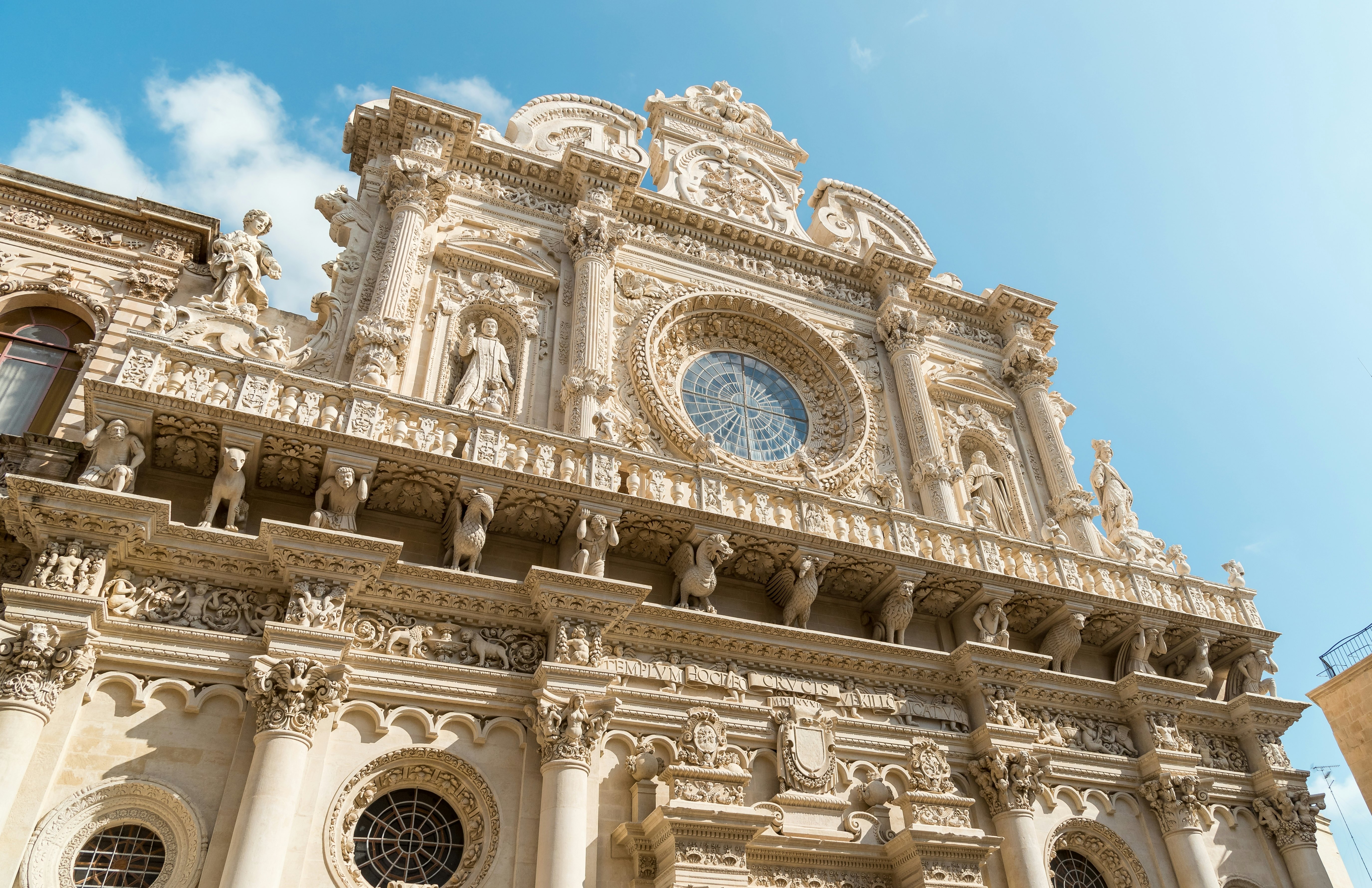
Day 6: Explore the baroque in Lecce
Go to Lecce: The train from Bari to Lecce takes under 2 hours (it’s a better choice than taking the bus). If you drive, you can go via Taranto to see the impressive, Greek-treasure-packed Museo Nazionale Archeologico di Taranto en route.
How to spend the day: Lecce is the Mezzogiorno’s capital of baroque, and there’s plenty to see along its sun-bleached limestone streets. The city boasts more than 40 churches and baroque buildings dating back to the 17th and 18th centuries, characterized by intricate decoration that brings to mind a lavishly iced wedding cake.
Swing by 17th-century landmarks such as the Basilica di Santa Croce, with its lavish detailing and ornate rose window, and the graceful Piazza del Duomo, home to the striking Cattedrale di Lecce. Check out the 15th-century Palazzo Arcivescovile and the jewel-box Palazzo dell'Antico Seminario, with its elegant chapel and museum of sacred art.
Be sure to stop into a local cafe for a coffee and pasticciotto – a warm, pastry shell filled with creamy custard and fruit. Enjoy this pastry delight with a side order of quality gelato at Natale Pasticceria, by Piazza Sant’Oronzo, or try popular breakfast stop Bar Cotognata Leccese.
Evening: Dine amid the baroque wonders. Moro serves delicious polpette (meatballs) with tomato sauce at tiny tables, while La Vecchia Osteria da Totu is good for tagliatelle-like sagne ‘ncannulate.

Day 7: Burrow into Matera
Go to Matera: Bus Miccolis and Itabus run coaches from Lecce to Matera, taking around 4 hours. It’s more convenient than taking the train, which involves a few changes to reach Ferrandina-Scalo station, a 30-minute bus ride from Matera.
How to spend the day: As you approach Matera, you may feel like you’ve been whisked back 500 years or so. Often described as la città sotterranea (the underground city), this truly ancient settlement sits over – and inside – a warren of caves hollowed out by residents over millennia.
Once derelict and destitute, Matera is now revitalized and vibrant. Its streets are full of life, and you can explore medieval marvels and eat at and stay in some of its marvelous cave dwellings. Joining the passeggiatta promenade here, as the afternoon sun repaints the pale limestone buildings in burning gold, is a true delight.
You’ll want to devote much of your time to wandering the tight-packed lanes, but pop into the art-filled TAM-Tower Art Museum and the sculpture-crammed Museo della Scultura Contemporanea Matera. On your wanderings, be sure to visit frescoed cave churches such as Santa Lucia alle Malve and Santa Maria di Idris.
If time permits, follow paths down into the gorge, or visit the empty, unrestored cave dwellings across the valley. One absolute must-see is the remarkable Cripta del Peccato Originale, a rock-cut cave church adorned with impressively preserved frescoes from the 8th and 9th centuries.
Evening: For dinner, you can dine with views of the sassi (the cave-dwelling districts) or dine in a cave-dwelling. For the former, grab a table on the terrace at Crialoss Cafè Bistrot; for the latter, book at Vitantonio Lombardo, showcasing complex and daring cooking inside a dramatically curving rock-hewn chamber.

Days 8–9: Cross the Strait of Messina to Sicily
Go to Syracuse: Getting to the island of Sicily will take most of a day. The trip is probably easiest by car, though trains from Metaponto or Ferrandina-Scalo near Matera can also get you to Villa San Giovanni, where you’ll board the ferry for the 30-minute ride to Messina. From Messina, trains and buses will take you to Syracuse in under 3 hours.
How to spend the day: You’ll want to explore Syracuse at your own pace, but there’s plenty to keep you busy. The biggest sight in the city – literally – is the enormous, Greek-built Teatro Greco, hewn from the rocky hillside in the 5th century BCE. It hosts traditional Greek dramas from May to July – book tickets well in advance through the INDA Fondazione.
The theater is the centerpiece of Syracuse’s impressive Parco Archeologico della Neapolis, where toppled masonry and outcrops riddled with catacombs pop up between olive groves, citrus groves, bamboo tunnels and cactus-lined scrubland. Get an overview at the Museo Archeologico Paolo Orsi.
Devote a few hours to exploring the atmospheric lanes of Ortygia, the city’s medieval core, with its scattered churches, castles and handsome Duomo, with the remains of a 5th-century temple to Athena embedded in its walls. Don’t miss the moody Catacomba di San Giovanni, a maze of chambers and passages below the martyrdom site of St Marcian, Syracuse’s first bishop.
Evening: Toast the end of the trip with artichokes, oysters, cured meats and cheese at Divino Mare by the market, or dine on home-style Sicilian seafood at A Putia delle Cose Buone. Alternatively, dine in style at Cortile Spirito Santo, set in a 17th-century palazzo at Ortygia’s southern tip.
This article was adapted from Lonely Planet’s Southern Italy guidebook, published in May 2025.









